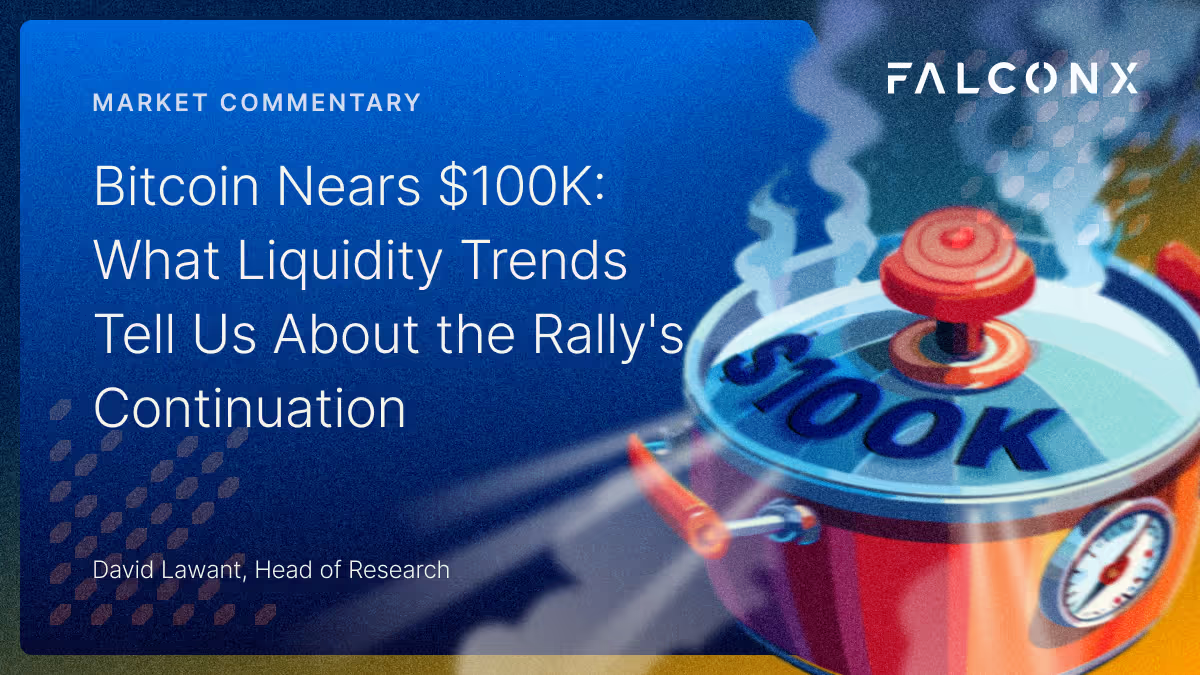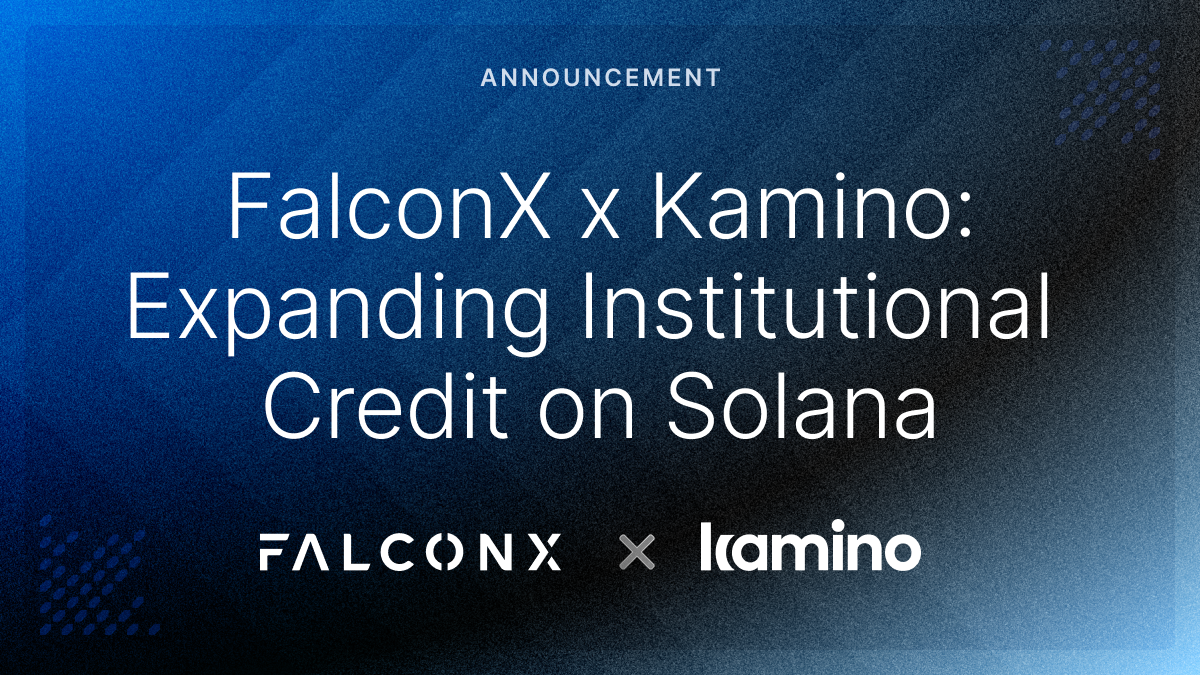Bitcoin Nears $100K: What Liquidity Trends Tell Us About the Rally's Continuation
Liquidity trends are showing their third major change over the past couple of years. Monitoring liquidity indicators such as volumes, order book depth, and the relationship between them, have been powerful indicators to gain confidence in the continuation of the rally.

After breaking its previous all-time high on election night, BTC continues to renew its highs and is now nearing the important psychological level of $100k.
While price movements grab headlines, liquidity trends offer crucial context for market cycles. This framework proved valuable in anticipating or confirming several key market shifts: the bull market that started in October 2023 ahead of the BTC spot ETF launch, the continuation into the first quarter of 2024, and the subsequent sideways market between the second quarter into the election.
Liquidity shifts, though infrequent, demand attention when they occur. We've observed notable changes since the election, as illustrated in the chart below showing USD turnover for BTC, ETH, and SOL since 2018 (spot volumes right, futures left).

BTC reached its highest spot volume print ever on a seven-day moving average basis and for the first time since 2021 is in shooting range of doing the same on the futures side. While spot volumes on the week after the election brought the daily traded value to above $40 billion, over the past week it was slightly lower at $25-35 billion but still two to three times the levels we have been seeing between March 2024 and the election. With the exception of SOL, alts still have a long way to go to match their turnover figures of the 2021 cycle.
BTC recently set an all-time high in spot volume (7-day moving average) and is for the first time approaching its futures volume record from 2021. Daily traded figures in the spot market broke above $40 billion post-election, before settling at $25-35 billion this past week but still 2-3x higher than pre-election levels. On the other hand, most altcoins with the exception of SOL, remain well below their 2021 cycle turnover figures.
Interestingly, and similarly to the ensuing bull market in October 2023, the increase in volumes hasn't been accompanied by increased order book depth.
The chart below displays the BTC spot order book 1% depth, shown in USD terms on the left axis and in native BTC units on the right. The bid side of the order book is represented as positive values while the ask side appears as negative values.

The recent USD spot order book depth expansion is entirely due to price appreciation. In native BTC terms, the book has actually contracted from pre-election levels. ETH and SOL show similar patterns.
Higher volumes paired with a tighter order book means trading activity has a stronger impact on price action. In other words, prices tend to have a higher elasticity to newsflow and overall market mood shifts when trading volumes are high relative to market depth.
One way to visualize this relationship is through the ratio between daily spot traded volume to the average daily spot order book 1% depth, or what I’m calling the liquidity absorption ratio. The chart below shows this indicator since 2023 for BTC, ETH and SOL.

Using BTC as a reference, high liquidity absorption ratios coincided with two major upward re-ratings. First, the early 2023 move from $15-20k to $30k when the market started to recovery from the FTX debacle, and then the spot ETF-driven rally between October 2023 and March 2024 that underpinned the move from $30k to the $60k range. The only notable divergence in the past two years occurred during September 2024's Yen carry trade unwind, when this indicator remained elevated despite a price correction.
We are now hitting liquidity absorption ratios as high as in these former instances. The emerging signal is encouraging, and I’m expecting it to remain an interesting confirming indicator about the strength of the rally.
Crypto price rallies, however, are rarely linear.
Another indicator that helps guide us through short-term corrections is the order book skew ratio, or the ratio between the ask and the bid sides of the order book. The chart below shows this ratio for majors BTC, ETH, and SOL smoothed by a three-day moving average.

When price rallies coincide with high order book skews, it indicates executed buy orders aren't being replenished with new flow. At extreme levels, the abundance of sell orders can make the market more vulnerable to negative news and subsequent short-term corrections.
BTC's order book skew has shown the highest variability over the past two years, making it the most reliable indicator for potential pullbacks. As we near $100k, the skew approaches levels seen only three times since 2022. While this doesn't threaten the medium-term rally, it suggests that the struggle to break above the $100k level could be intense.
All in, liquidity trends are showing their third major change over the past couple of years. Monitoring liquidity indicators such as volumes, oderbook depth, and the relationship between them, have been powerful indicators to gain confidence in the continuation of the rally.
As we highlighted before, the current rally is not coming without risks. The primary one is macro. While stocks are rallying on potential tax cuts and improved growth prospects, the bond market signals concerns about 2025's outlook - particularly regarding trade policy, fiscal policy, central bank independence, and their intersection with inflation. If these concerns spread to risk assets broadly, crypto could be caught in the correlation.
But while liquidity indicators currently suggest that we might chop around the $100k level before decisively breaking above it, the overall picture remains encouraging.
This material is for informational purposes only and is only intended for sophisticated or institutional investors. Neither FalconX Limited, FalconX Bravo, Inc., FalconX Delta, Inc., FalconX Foxtrot Pte Ltd., FalconX Golf Pte Ltd., Solios, Inc., Falcon Labs, Ltd., KestrelX, Ltd., nor Banzai Pipeline Limited (separately and collectively “FalconX”) service retail counterparties, and the information on this website is NOT intended for retail investors. The material published on this website is not (i) an offer, or solicitation of an offer, to invest in, or to buy or sell, any interests or shares, or to participate in any investment or trading strategy, (ii) intended to provide accounting, legal, or tax advice, or investment recommendations, or (iii) an official statement of FalconX or any of its affiliates. Any information contained in this website is not and should not be regarded as investment research, debt research, or derivatives research for the purposes of the rules of the CFTC or any other relevant regulatory body.
Prior to entering into any proposed transaction, recipients should determine, in consultation with their own investment, legal, tax, regulatory, and accounting advisors, the economic risks and merits, as well as the legal, tax, regulatory and accounting characteristics and consequences of the transaction. Pursuant to the Dodd-Frank Act, over-the-counter derivatives are only permitted to be traded by "eligible contract participants" (“ECP”s) as defined under Section 1a(18) of the CEA (7 U.S.C. § 1a(18)). Do not consider derivatives or structured products unless you are an ECP and fully understand and are willing to assume the risks.
Solios, Inc. and FalconX Delta, Inc. are registered as federal money services businesses with FinCEN. FalconX Bravo, Inc. is registered with the U.S. Commodities Futures Trading Commission (CFTC) as a swap dealer and a member of the National Futures Association. FalconX Limited, FalconX Bravo, Inc., FalconX Delta, Inc., Falcon Labs Ltd., and Solios, Inc. are not registered with the Securities & Exchange Commission or the Financial Industry Regulatory Authority. FalconX Golf Pte. Ltd. is not required to be registered or licensed by the Monetary Authority of Singapore (MAS). MAS has granted FalconX Foxtrot Pte. Ltd. a temporary exemption from holding a license under the PSA for the payment services caught under the expanded scope of regulated activities for a specified period. FalconX Limited is a registered Class 3 VFA service provider with the Malta Financial Services Authority under the Virtual Financial Assets Act of 2018. FalconX Limited is licensed to provide the following services to Experienced Investors, Execution of orders on behalf of other persons, Custodian or Nominee Services, and Dealing on own account. FalconX’s complaint policy can be accessed by sending a request to complaints@falconx.io
"FalconX" is a marketing name for FalconX Limited and its affiliates. Availability of products and services is subject to jurisdictional limitations and capabilities of each FalconX entity. For information about which legal entities offer trading products and services, or if you are considering entering into a derivatives transaction, please reach out to your Sales or Trading representative.

.png)

